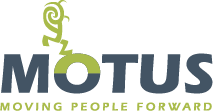March is the designated month to celebrate the many contributions women have made to American history. However, as this month ends, there’s no reason we should stop the recognition.
But first, let’s go through a brief history of how Women’s History Month started:
- It started as a weeklong celebration of women’s contributions to culture, history, and society organized by the school district of Sonoma, California in 1978. The week included presentations at dozens of schools, hundreds of students who participated in a “Real Woman” essay contest, and a parade in downtown Santa Rosa.
- Two years later, President Jimmy Carter issued the first presidential proclamation declaring the week of March 8 as National Women’s History Week. The U.S. Congress followed suit, passing a resolution establishing a national celebration in 1981. Six years later, the National Women’s History Project successfully petitioned Congress to expand the event to the entire month of March.
While we have come a long way in terms of equality in the workplace, the reality is there are still barriers we need to acknowledge and combat to keep women moving forward. With the average person spending one-third of their life at work, employers must make the effort to foster safe and inclusive environments for all their employees.
Here are some ways to be more inclusive of women in the workplace:
Center women’s voices and perspectives: There’s been a lot of talk recently about the importance of centering certain voices, but what does that mean? It means you uplift, trust, and value the lived experiences of those most affected by the inequity you’d like to address. The significance of visibility in the workplace cannot be understated, which causes a challenge for many women who feel the double standards of speaking up and self-promotion. By creating an inclusive and safe environment, you’re allowing women to bring their full, authentic selves into the workplace while working to create more equitable opportunities.
Avoid using gender-based language (cut out the unconscious bias): Much of what is said in meetings and written in job ads is seen as using “default” work jargon. The problem is this language is outdated and only targets a section of your audience. For example, male-oriented titles like “rockstar,” “superhero,” and “ninja,” can inadvertently prevent women from applying to your job. Instead, keep it straightforward and use the actual name of the position. Using gender-neutral language makes everyone feel welcome, no matter their identity. It also sets an example for employees that gender-neutral language is the norm and that no one should assume anything about someone without asking first.
Another suggestion is to limit the number of requirements in the ad. Research shows that women are unlikely to apply for a position unless they meet 100 percent of the requirements, while men will apply if they meet 60 percent of the requirements.
Partner with women’s empowerment groups and initiatives: One of the best ways to show support throughout the year is to partner with organizations that improve the lives of women and girls around the world. From advocating for pay equality to promoting girls in STEM, there is an endless number of causes to choose from when deciding which women’s organizations to support. While we’re talking empowerment, encourage your team to get involved by offering up volunteer opportunities or fundraisers where the company can be involved.
Share books written by female authors: Although reading can’t solve all problems, studies have shown it can increase a person’s level of empathy. Learning about someone else’s life experience offers the opportunity to develop a better understanding of their perspective. Make it even more fun by starting a book club! The idea behind this method is to inspire conversations about women, diversity, and inclusivity.
Include intersectionality in the conversation: Being inclusive is not a one-size-fits-all model and gender is just the beginning when it comes to creating an inclusive work environment for women. If you want to create a company culture where no one feels judged or excluded, understanding intersectionality should be at the top of your list. Intersectionality refers to the different aspects and experiences that make up a person’s identity. Examples of these aspects include gender, sex, race, class, sexuality, religion, disability, and physical appearance. While this is likely the most difficult on the list to tackle, learning and recognizing the multiple factors of advantage and disadvantage is an essential first step.







